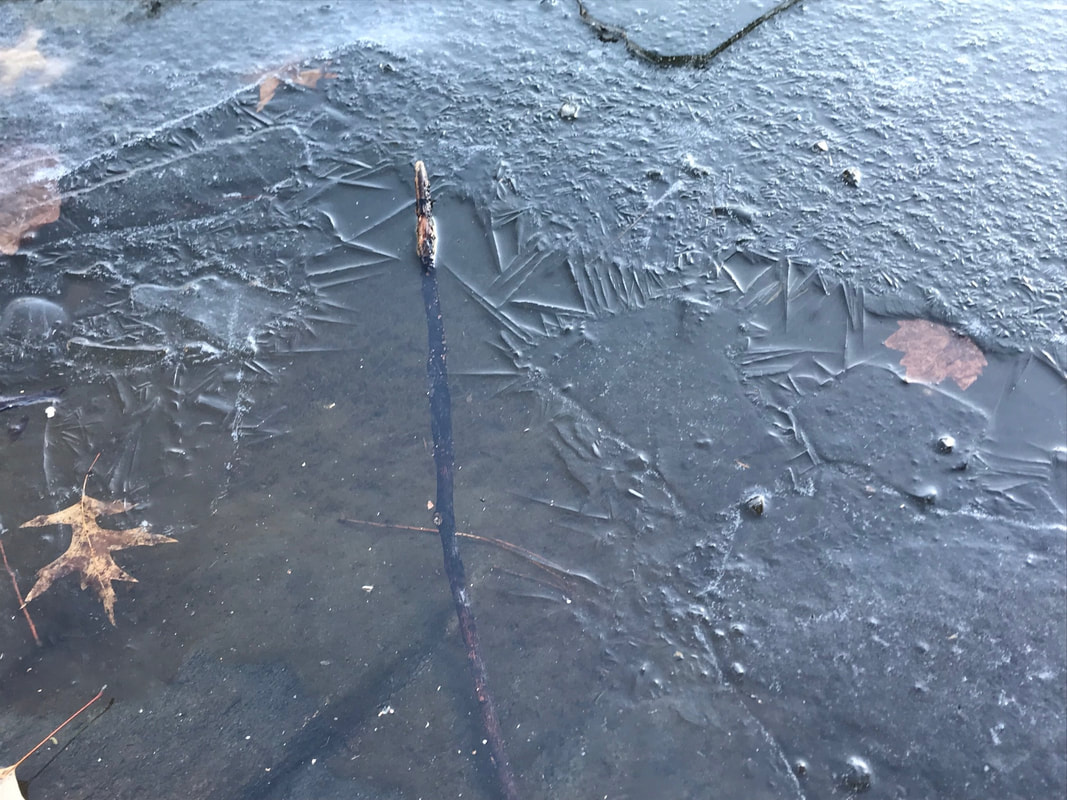 The Central Park Lake The Central Park Lake With a number of days of below-freezing temperatures, ponds in the New York City area are beginning to ice over. Water that just a week ago responded to the subtlest of breezes begins to harden and solidify. The freezing starts on the edges of the pond, where the water is shallow, and crystallizes into a choreography of frozen formations: varying patterns and textures, spindle-like, smooth and pristine, rough and abraded, rivulets and cracks. The ice encases fallen leaves and twigs, a cryogenic embalming that delays their decomposition until the spring thaw. Infinite small bubbles gather below the frozen surface, and peering down through the ice at these glistening spheres seems not unlike gazing through a glass window at the starry night sky. They form a Milky-Way in aqueous suspension. Over the coming weeks, assuming the temperature frequents below freezing, the ice will grow toward the ponds' center, until the entire pond is frozen over. This icy sheath, H20 in its solid state, will separate the liquid world below, the realm of hibernating fish, turtles, and aquatic frogs, from the air above containing water in a gaseous state, including the moisture of our own breath, cloud-like and visible, and comingling with the chilly winter air.
0 Comments
Leave a Reply. |
About this Blog
Hi! I'm Nancy Kopans, founder of Urban Edge Forest Therapy. Join me on an adventure to discover creative ways to connect with nature in your daily life, ways that are inspired by urban surroundings that can reveal unexpected beauty, with the potential to ignite a sense of wonder. Archives
April 2023
Categories
All
|

 RSS Feed
RSS Feed